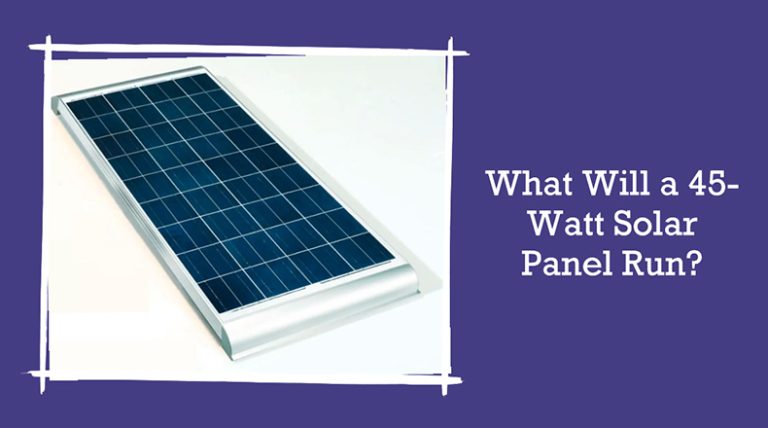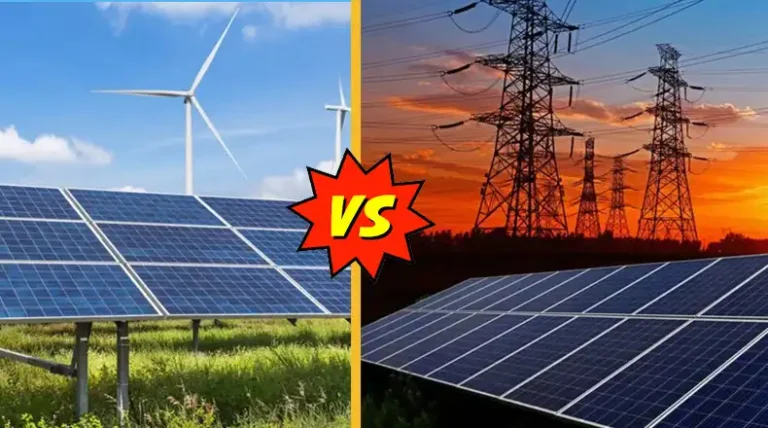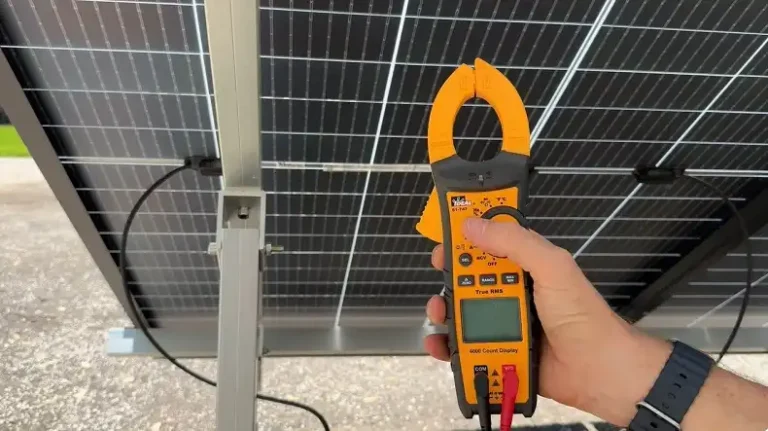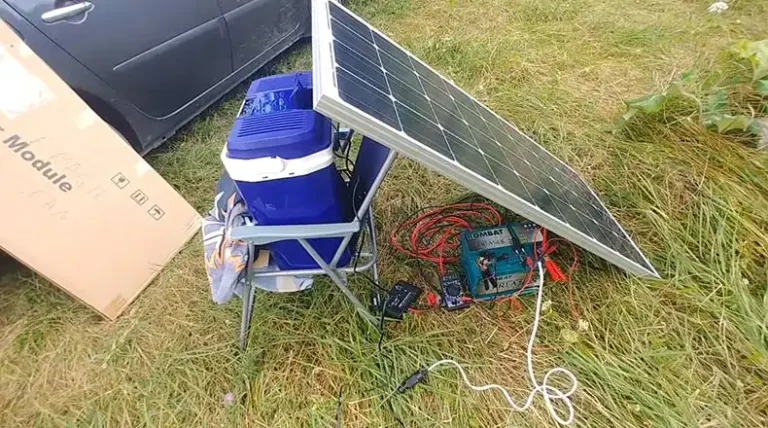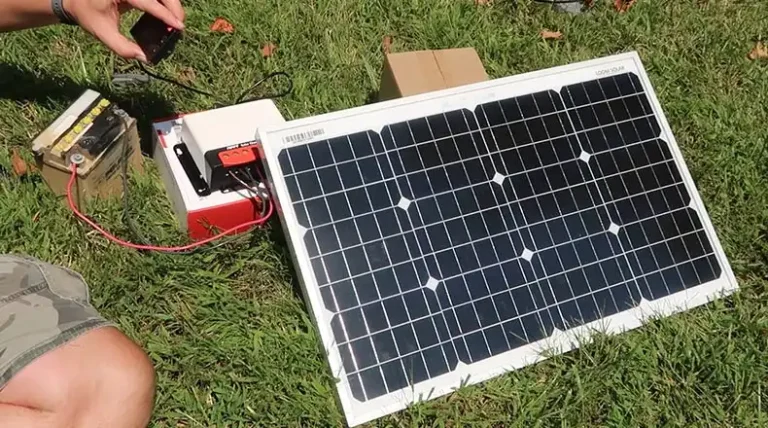How to Determine Solar Panel Fuse Size (Steps Guide)
Solar panel systems, also called photovoltaic (PV) systems, convert sunlight into usable electricity through solar panels working in concert with inverters, charge controllers, combiner boxes, and batteries. These systems demand proper installation to ensure safe functionality and efficiency. A key but often overlooked area is correct solar panel fuse sizing between the PV solar array output and the rest of the system.
Fuses serve as a vital safety component by preventing wires from overheating if overloaded. When electrical surges occur, the fuses burn out rather than conductors catching fire or equipment failing. For this protective quality, accurately rating fuses to expected volt and amp capacities as dictated by National Electrical Code (NEC) guidelines provides an essential safeguard.
However, faulty fuse sizing can undermine system performance and become a serious hazard. Oversized fuses may allow wires or components to slowly degrade while undersized fuses can require frequent replacement from burning out prematurely to normal current flows. By understanding a few key calculations and recommendations, the right solar panel fuse can be determined.
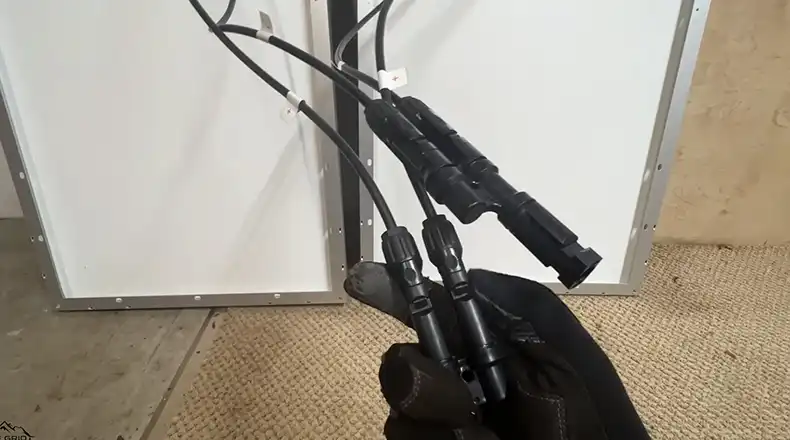
How Do I Determine the Solar Panel Fuse
Properly sizing fuses in photovoltaic (PV) systems requires calculating expected amperage draw and accounting for surges. The main steps are:
Step-01: Calculate Total Amperage
Sum watts from all solar panels
Divide by system voltage (12V or 24V typical)
Add 10 amp buffer as guideline
Step-02: Account for Voltage Surges
Size for 125-175% of expected amps per NEC
Surges most likely from lightning strikes
Prevents wires from overheating during spikes
Step-03: Example of Sizing
4 x 100W panels = 400W system
400W / 24V = 16.67A
With buffer = 16.67A + 10A = 26.67A
Fuse at 150% = 26.67 x 1.5 = 40A fuse
Properly sized fuses prevent fires and equipment damage while allowing safe amperage (A) and wattage (W) flow. Use the 1.25-1.75 guideline to account for real-world voltage variances.
Guide to Appropriate Solar Panel Fuse Size for Your System
When installing a photovoltaic (PV) system with solar panels, one of the key steps is to determine the appropriate fuse size to protect the system. The fuse needed will depend primarily on the solar panel wattage and wiring setup.
Fuse Locations
Fuses like watchful sentinels stand guard at each solar panel’s output, forming a united front in the system’s combiner box. Even within inverters and controllers, fuses silently stand ready. Following the strict commands of the National Electrical Code, these miniature heroes ensure your solar system enjoys a bright and secure future.
Solar Panel Arrangements
Solar panels in photovoltaic systems can be wired together in different arrangements using electrical connectors. Most commonly, panels are connected in series to increase voltage as well as in parallel to increase amperage. By combining series and parallel wiring set ups across the various panels in the system, optimal voltage and amperage levels can be reached to handle the load requirements. The majority of photovoltaic systems utilize panels wired in hybrid series and parallel configurations to create DC output compatibility with other system components such as batteries, inverters, and charge controllers downstream in the system.
Calculating Total Amperage
Determining the total amperage draw is an essential step in properly sizing the solar system conductors and fuses. This calculation requires adding up the wattage of all panels to be installed, including standard panel sizes seen often such as 90W, 150W, 200W and 300W panels. The total accumulated wattage amount can then be divided by the nominal system voltage to derive the overall amps. Conductor wires and fuses must be rated appropriately to handle the full load based on the National Electrical Code, which requires rating at 125%-175% of calculated amperage as a rule of thumb for PV systems. Accurately working through the wattage to amperage conversion ensures overhaul solar array amp capacity is accounted for.
Validated Fuse Sizes
It is often the case that a standard 30 amp fuse is utilized at the string level when considering the individual solar panels wired in series formations within the overall photovoltaic system. However, between the total solar panel string array output and the combiner boxes that aggregate multiple strings, validated larger capacity fuses certified by UL prove necessary. Making diligent fuse size selections in accordance with the full load amperage draw enables prevention of hazardous overheating conditions across conductors. When rated correctly for expected electrical loads under standard test conditions, fuses can provide a vital safeguard across the solar system.
Fuse Sizing for Different Type of Solar Panel (90W, 150W, 200W and 300W panels)
Fuse Size for 90W Solar Panel
When installing 90 watt solar panels in a photovoltaic system, determining the appropriate fuse size involves calculating the panel’s short circuit current (Isc) and accounting for multiple panels wired together.
Fuse Sizing Factors
– Isc rating listed on individual solar panel
– Code requires 1.56 multiplier of Isc for fuse
– Panels in series sum the amperage
– Panels in parallel multiply the amperage
Fuse Selection
For example, with a 90W panel Isc of 4.6A:
– One 90W panel needs fuse for 4.6 * 1.56 = 7.1A → 8A fuse
– Three panels in series need fuse for 7.1 * 3 = 21.3A → 25A fuse
– Two strings of 3 panels in parallel needs 21.3 * 2 = 42.6A → 50A fuse
Fuse Size for 150W Solar Panel
When wiring 150 watt solar panels into a photovoltaic system, selecting the properly sized fuse involves calculating the short circuit current (Isc) for the total number of panels based on whether they are arranged in series or parallel.
Fuse Sizing Factors
– Isc rating listed on individual 150W panel
– Code requires minimum 1.56 multiplier of Isc
– Panels in series sum the amperage
– Panels in parallel multiply the amperage
Minimum Fuse Size
For example, with 150W panel Isc of 8.2A:
– One panel needs 8.2*1.56 = 12.8A → 15A fuse
– Two panels in series needs 2*12.8 = 25.6A → 30A fuse
– Three panels in parallel needs 3*12.8A = 38.4A → 40A fuse
Fuse Size for 200W Solar Panel
When installing 200 watt solar panels in a photovoltaic system, use the short circuit current (Isc) rating and wiring setup to determine the properly sized fuse as follows:
Fuse Sizing Factors
– Isc rating printed on individual 200W panel
– NEC requires minimum of 1.56 x Isc
– Panels wired in series sums amperage
– Panels wired in parallel multiples amperage
Minimum Fuse Size
For example with 200W panel Isc of 10A:
– 1 panel: 10A x 1.56 = 15.6A → 20A fuse
– 3 panels in series: 15.6A x 3 = 46.8A → 50A fuse
– 2 strings of 3 in parallel: 50A x 2 = 100A → 100A fuse
Round up to the next standard fuse size based on overall system amp capacity and wiring. Accurate fuse ratings prevent overheating and fire hazards while enabling full use of 200W solar potential per code.
Fuse Size for 300W Solar Panel
When installing 300 watt solar panels in a photovoltaic system, use the short circuit current (Isc) specified on the individual panel and consider total system wiring to determine appropriate fuse size as follows:
Fuse Sizing Factors
– Isc rating printed on 300W solar panel
– NEC mandates minimum fuse at 1.56 x Isc
– Panels in series sums amperage
– Panels in parallel multiples amperage
Minimum Fuse Rating
For example with 300W panel Isc of 11.7A:
– 1 panel: 11.7A x 1.56 = 18.2A → 20A fuse
– 3 panels in series: 18.2A x 3 = 54.6A → 60A fuse
– 2 parallel strings of 3 panels: 60A x 2 = 120A → 125A fuse
Always round up to the next available fuse size. Correct ratings prevent overheating while allowing full power usage. Consider panel configurations and follow NEC standards for safety.
Consideration While Calculating the Fuse Size
While the solar panel wattage and wiring setup are the primary drivers in determining appropriate fuse sizing, several secondary factors should also be weighed:
Additional Considerations
– Wire gauge and composition
– Total solar array voltage
– Ambient temperature conditions
– Manufacturer overcurrent guidance
– Fuse type ratings
Wire Gauge and Material
– Thicker wires allow higher ampacity
– Copper wires recommended over aluminum
Array Voltage
– Systems may run at 12V, 24V etc.
– Used to convert watts to amps
Temperature Factors
– Heat impacts conductor capacity
– Derating may be required
Review all variables against NEC code requirements when selecting final fuse size. Confirm chosen fuses have validated solar/PV usage specifications. Thorough evaluation ensures optimal system protection.
Key Factors in Fuse Size Selection
Short-Circuit Current (Isc): The most crucial factor, explained: defining Isc, its measurement, and variability.
Derating Factor: Accounting for potential variations in Isc: what is derating and why is it applied?
System Configuration: Series, parallel, or combined connections – how they impact total current flow.
Wire Gauge: Matching fuse rating to the ampacity of your system’s wiring for safe operation.
Manufacturer Recommendations: Always refer to your panel and inverter specifications for guidance.
While the main fuse sizing depends on wattage and wiring, additional variables impact the safety margins. Verify the complete system picture against manufacturer guidance and code standards.
Additional Important Information
Types of Fuses: Familiarizing yourself with different fuse types used in solar systems and their characteristics.
Installation Best Practices: Proper fuse placement, connection techniques, and maintenance tips.
Resources and References: Links to helpful tools, calculators, and industry standards for further guidance.
Key Questions
What is the easiest way to size solar panel fuses?
The simplest approach is taking the total wattage of the full solar array, dividing by system voltage to get amps, then applying the 125-175% safety margin rule per NEC standards for conductors and fuses.
Do I need differently rated fuses for series vs parallel wired panels?
Yes, series and parallel arrangements draw different amp loads. Series sums amperage while parallel multiplies flows based on the number of strings. Calculate amp capacity based on the specific wiring layout.
How do I upsize a fuse if overload tripping occurs?
If fuses burn out prematurely, the next larger standard size fuse should have sufficient overhead. For example, go from 30A to 40A. Review wiring gauge as undersized cables can cause tripping.
What specialized fuses should be used for solar panels?
Opt for UL-certified PV fuses designed specifically to withstand solar power variances rather than standard fuses which can deteriorate over time.
Where should fuses be installed in the PV system?
Fuses are required at the solar panel disconnect, DC combiner box, inverter input, charge controller, and battery bank connections per NEC requirements. This protects all conductors throughout.
End Notes
Correctly rating fuses is vital for optimal solar panel system protection. Calculate expected amp load based on total watts and panel series or parallel configuration, then apply NEC margin guidelines of 125-175% for size selection. For complex arrays or any uncertainty, qualified solar professionals can validate fuse sizing across all wiring and components. Right-sized fuses prevent hazards enabling full utilization of PV capabilities.


